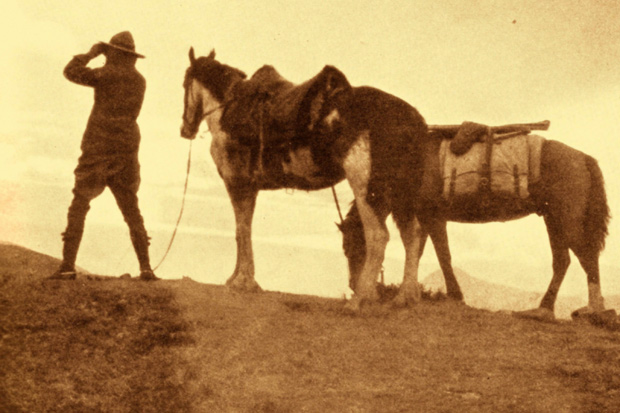Aimé Tschiffely was what I have seen in other contexts called a ‘doublehard bastard’. In the middle of the 1920s, this Swiss-born schoolteacher at the age of 30 feared that he was getting stuck in a groove and that he wanted ‘variety’. So he set out on a solo horse-ride from Buenos Aires to New York City.
Tschiffely wasn’t even much of a horseman at this point. But he had the notion that the wild Criollo horses of Argentina — descendents of the Spanish horses transported to the continent by the Conquistadors in the 16th century and brought to excellence by their survival in that unforgiving environment in the centuries since — were the hardiest horses for long riding in the world. Everyone else thought he was mad.
But off he set, and this volume — originally published in 1933 — describes his journey: 10,000 miles over some of the roughest country imaginable. Those who thought him mad would seem to have had a point. But he made it — at least to Washington DC; he scrupled that going on to New York might look like showing off — and in the manner of its telling, Southern Cross to Pole Star speaks of sanity: of pragmatism, fastidiousness and determination. Also of being doublehard. An introduction by the explorer Robin Hanbury-Tenison, which is mostly about Robin Hanbury-Tenison, testifies to the book’s influence on long riders ever since.
It’s quite a piece of work. Tschiffely made no claims for himself as a writer — the keynotes of his tone throughout are modesty and amiability — but that does him down: he tells his story with great lucidity, occasional shafts of humour and a decently restrained note of anthropological curiosity. Here he observes the crowd, for instance, waiting for a movie to begin in Cuzco:
The young caballeros, who had carefully plastered down their oily black hair, were wearing their very best clothes for the occasion and preferred to stand along the walls, from where they had a better view of the señoritas, who nervously and self-consciously fingered their dresses.








Comments
Join the debate for just £1 a month
Be part of the conversation with other Spectator readers by getting your first three months for £3.
UNLOCK ACCESS Just £1 a monthAlready a subscriber? Log in